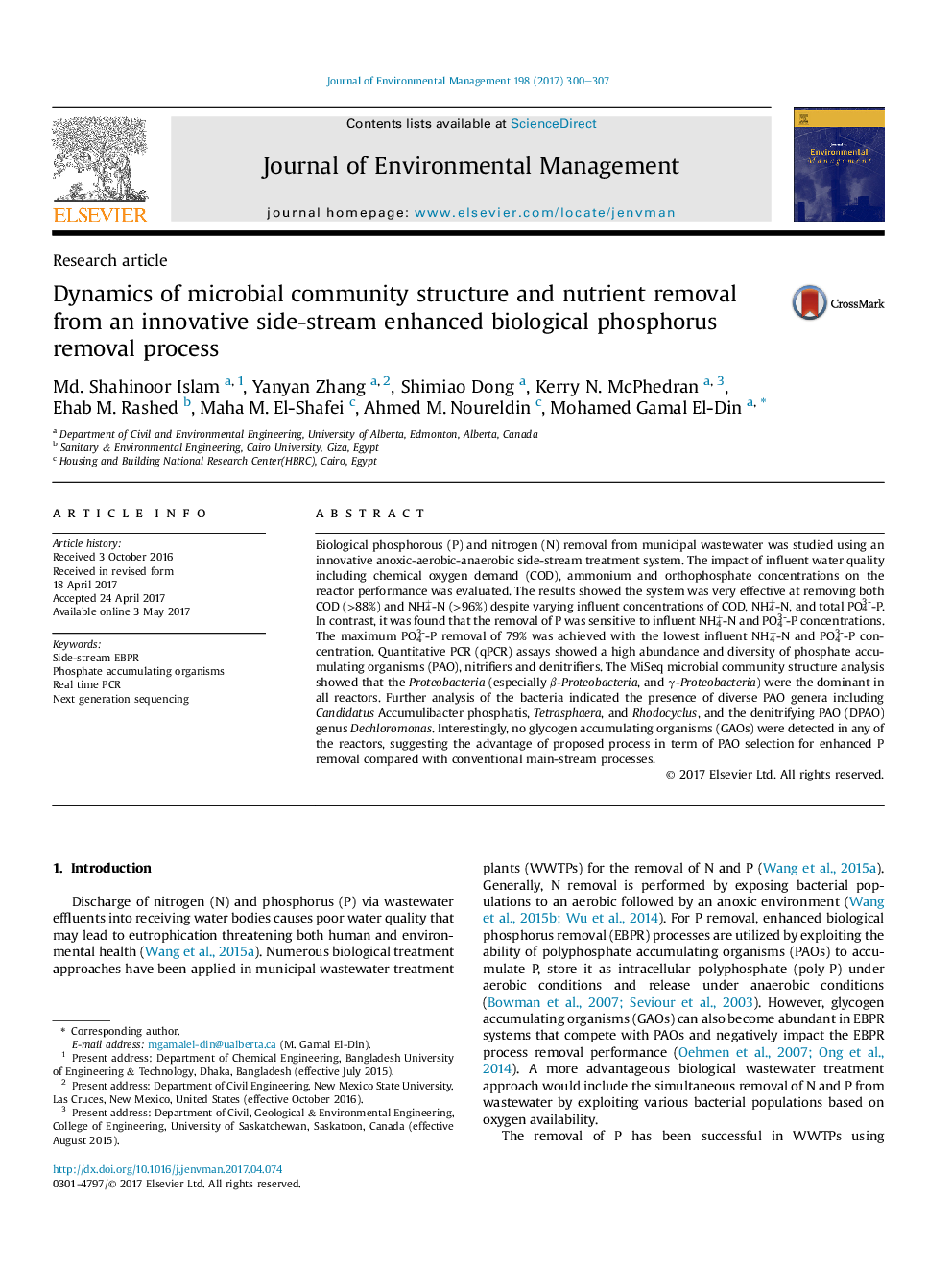| کد مقاله | کد نشریه | سال انتشار | مقاله انگلیسی | نسخه تمام متن |
|---|---|---|---|---|
| 5116754 | 1378105 | 2017 | 8 صفحه PDF | دانلود رایگان |
- An innovative anoxic-aerobic-anaerobic side-stream EBPR process was proposed.
- The maximum P removal was achieved with the lowest influent ammonia concentration.
- High influent ammonia and P concentration adversely impacted system performance.
- Both denitrifying and conventional PAOs played an important role in P removal.
- Diverse PAOs species were detected while no GAOs were found.
Biological phosphorous (P) and nitrogen (N) removal from municipal wastewater was studied using an innovative anoxic-aerobic-anaerobic side-stream treatment system. The impact of influent water quality including chemical oxygen demand (COD), ammonium and orthophosphate concentrations on the reactor performance was evaluated. The results showed the system was very effective at removing both COD (>88%) and NH4+-N (>96%) despite varying influent concentrations of COD, NH4+-N, and total PO43--P. In contrast, it was found that the removal of P was sensitive to influent NH4+-N and PO43--P concentrations. The maximum PO43--P removal of 79% was achieved with the lowest influent NH4+-N and PO43--P concentration. Quantitative PCR (qPCR) assays showed a high abundance and diversity of phosphate accumulating organisms (PAO), nitrifiers and denitrifiers. The MiSeq microbial community structure analysis showed that the Proteobacteria (especially β-Proteobacteria, and γ-Proteobacteria) were the dominant in all reactors. Further analysis of the bacteria indicated the presence of diverse PAO genera including Candidatus Accumulibacter phosphatis, Tetrasphaera, and Rhodocyclus, and the denitrifying PAO (DPAO) genus Dechloromonas. Interestingly, no glycogen accumulating organisms (GAOs) were detected in any of the reactors, suggesting the advantage of proposed process in term of PAO selection for enhanced P removal compared with conventional main-stream processes.
Journal: Journal of Environmental Management - Volume 198, Part 1, 1 August 2017, Pages 300-307
